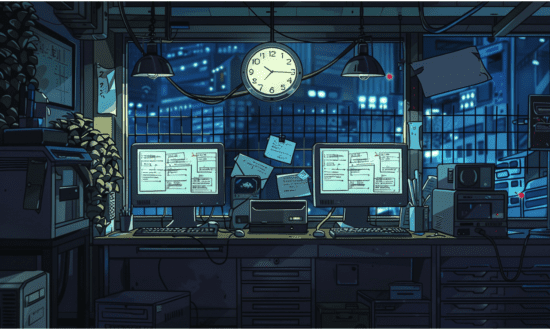Digital Rights Management (DRM) systems are a crucial tool for protecting digital content from unauthorized access or reproduction. Whether you’re a content creator looking to protect your intellectual property or a business looking to protect revenue streams, DRM is an essential consideration. In this article, we’ll explore the various types of DRM systems, the benefits and challenges of using them, and best practices for implementing DRM to safeguard against unauthorized access or reproduction of protected content.
Introduction to Digital Rights Management
At its core, Digital Rights Management is a set of technologies and techniques that are used to protect digital content from unauthorized use or distribution. This can include anything from music and movies to software and ebooks. DRM is designed to give content creators and owners control over how their content is accessed and used, helping to prevent revenue loss due to piracy and unauthorized sharing.
There are a number of different DRM systems available, each with its own unique set of features and capabilities. In the following sections, we’ll take a closer look at the various types of DRM systems, their benefits and challenges, and best practices for implementing DRM to safeguard against unauthorized access or reproduction of protected content.
Types of DRM systems
When it comes to DRM systems, there are a few different approaches that can be taken. Some of the most common types of DRM systems include:
- Encryption: This is a method of encoding data so that it can only be accessed or decrypted by someone with the proper key or password. Encryption is often used in DRM systems to prevent unauthorized access to protected content.
- Watermarking: This is a technique that involves adding a unique, invisible identifier to a piece of content, such as an audio or video file. Watermarking can be used to trace the source of pirated content, making it easier to identify and prosecute those responsible for distributing it.
- License management systems: These are systems that control access to protected content based on the terms of a license agreement. This could include limiting the number of devices on which the content can be accessed, or setting expiration dates for access to the content.
- Other techniques: There are a number of other techniques that can be used in DRM systems, such as digital fingerprints, device binding, and more.
Benefits of DRM systems
There are a number of benefits to using DRM systems to protect digital content. Some of the key benefits include:
- Protecting the rights of content creators and owners: DRM systems can help to ensure that content creators and owners are able to control how their content is accessed and used, giving them a greater degree of control over their intellectual property.
- Preventing revenue loss due to piracy: By making it more difficult for unauthorized individuals to access or distribute protected content, DRM systems can help to prevent revenue loss due to piracy.
- Improving the security of protected content: DRM systems can also help to improve the security of protected content by making it more difficult for unauthorized individuals to access or distribute it. This can be particularly important for sensitive or confidential information.
Challenges and drawbacks of DRM systems
While DRM systems can be effective at protecting digital content, they also come with a number of challenges and drawbacks. Some of the key challenges and drawbacks include:
Potential for DRM systems to be bypassed or hacked: Unfortunately, no DRM system is completely foolproof. There is always the potential for DRM systems to be bypassed or hacked, allowing unauthorized individuals to access protected content.
Compatibility issues with different devices or software: DRM systems can sometimes be incompatible with certain devices or software, which can be frustrating for users. This can be particularly problematic for users who have older or non-standard devices.
Potential for DRM to negatively impact the user experience: DRM systems can sometimes negatively impact the user experience, especially if they are overly restrictive or difficult to use. For example, users may have to jump through hoops to access protected content, or may be unable to use the content on certain devices. This can be frustrating for users and may discourage them from using the content altogether.
Best practices for implementing DRM systems
If you’re considering implementing a Digital Right Management system to protect your digital content, there are a few best practices you should keep in mind. Some of the key best practices for implementing DRM systems include:
Selecting the right DRM system for your specific needs: Different DRM systems are suitable for different types of content and situations. It’s important to carefully consider your specific needs and choose a DRM system that meets those needs.
Ensuring that the DRM system is properly implemented and configured: It’s important to properly implement and configure your DRM system to maximize its effectiveness. This may involve working with a DRM provider or consulting with experts to ensure that the system is set up correctly.
Regularly updating and maintaining the DRM system: As with any technology, DRM systems can become outdated or vulnerable to new threats over time. It’s important to regularly update and maintain your DRM system to ensure that it remains effective at protecting your content.
Communicating with users about the DRM system and any limitations or restrictions it may impose: It’s important to be transparent with your users about the DRM system and any limitations or restrictions it may impose. This can help to prevent frustration or confusion on the part of the user and improve the overall user experience.
Conclusion
Digital Rights Management systems are an essential tool for protecting digital content from unauthorized access or reproduction. Whether you’re a content creator looking to protect your intellectual property or a business looking to protect revenue streams, DRM can help to ensure that your content is accessed and used only in the ways you authorize. While there are challenges and drawbacks to using DRM systems, following best practices for implementing DRM can help to maximize their effectiveness and minimize any negative impact on the user experience.
You can access the infographic here.
The opinions expressed in this post belongs to the individual contributors and do not necessarily reflect the views of Information Security Buzz.




